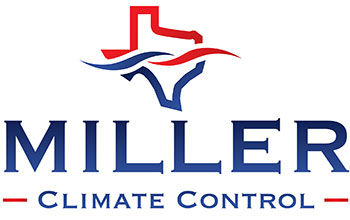
If you live in a newer home in Georgetown, it was likely constructed with energy efficiency at the top of the list. This means more insulation and windows and doors with enhanced seals. While these enhancements are great for keeping your heating and cooling bills under control, they’re not so excellent for your indoor air quality.
Your HVAC system needs to work with a filter. But if you have a flat filter, you won’t be receiving enough filtration. This type only provides the bare minimum of protection by keeping dust out of your heating and cooling system.
While you can upgrade to a pleated filter or one with a better MERV rating, it still might not be enough filtration, especially if someone in your house has allergies or other respiratory issues.
That’s where a whole-house air purifier can be a great solution. These systems are attached within ductwork to provide powerful filtration throughout your home. Depending on the model you go with, you’ll be able to filter allergens, odors and even some viruses under certain airflow conditions.
Here are our best systems from Lennox, an industry leader in air purification.
Best Air Purifiers from Lennox
1. HEPA Air Purifiers
A HEPA air purifier, like the Healthy Climate® High-Efficiency Particulate Air Filtration System, delivers the best filtration. These filters were first made to guard scientists as they developed the atomic bomb. Today, they’re essential in hospitals and other medical operations.
The Healthy Climate HEPA Filtration System has a three-step filtration procedure. A prefilter catches significant particles before the HEPA filter captures the rest of miniscule particles. Then, a charcoal filter wipes out odors and chemical vapors.
The PureAir™ S Air Purification System is compatible with all HVAC brands and seamlessly works with your smart home. It fights the three leading varieties of indoor air pollutants:
- Airborne particles
- Chemical odors and vapors
- Germs and bacteria, under certain airflow conditions
This air purifier can get rid of 99.9%* of pollutants, including mold spores, pollen, dust and pet dander. It’s also capable of decreasing or eliminating 90%1 of flu and cold viruses under certain airflow conditions. And, based on laboratory and field studies, it decreases and destroys approximately 50% of your home’s odors and chemical vapors within 24 hours.
The PureAir S comes with sensing features that make it simple to maintain. When linked with an iComfort® S30 smart thermostat, you’ll get a notification to replace the filter and UVA light.2 This home air purifier must be used with communicating Lennox systems and the iComfort S30.
2. Media Air Cleaners
Lennox Healthy Climate® Media Air Cleaners are made in a variety of MERV ratings to match your needs. This rating measures how capable filters are at trapping contaminants. The better the number, the greater the filtration.
The Healthy Climate Carbon Clean 16® Media Air Cleaner is recommended for families with allergy suffers and pets. This is a HEPA filter air purifier, as it has a MERV 16 rating for hospital-grade filtration. And it eliminates more than 95%3 of unhealthy particles from your house’s air.
The Healthy Climate 13 Media Air Cleaner is recommended for households who are looking for stronger protection from viruses and bacteria. This filter captures 99% of larger particles like dust, pollen and lint. And up to 54% of finer particles down to 0.3 microns.4
The Healthy Climate 11 Media Air Cleaner is a an excellent air purifier for allergies and in houses with pets. It eliminates more than 87% of bigger particles down to 3 microns and more than 28% of miniscule ones down to 0.3 microns.4 It’s able to offer this effective filtration without running up the cost of turning on your home comfort system.
These three media air cleaners work with any brand of HVAC system. Regardless, it’s important to be aware that some of the denser ones, like MERV 16 and 13, may limit your system’s airflow. This can hike up your utility expenses.
3. UV Air Purifiers
The sun’s UV rays are to blame when you get a stinging sunburn. But this wavelength of light has a helpful application when placed in your ductwork. It’s also strong enough to eliminate germs, mold and fungi under certain airflow conditions.
In fact, the Healthy Climate UV Germicidal Light can lower the concentration of airborne microorganisms by 50% in as short as 45 minutes.5 This light destroys cell structure, which halts these microorganisms from flourishing and infiltrating around your house.
And this UV air purifier can also help keep your home comfort system clean and operating efficiently. It takes care of germs, mold and fungi that are hidden inside ductwork and your system itself. This UV light air purifier does all this work without creating lung-inflaming ozone.6
Breathe Easier with the Help of Our Air Purification Professionals
Your household’s comfort and health is our top priority at Miller Climate Control LLC. We know there are lots of options out there. That’s why we make it simple to partner with our indoor air quality professionals. We specialize in recommending solutions that fit your needs and budget, and we’d love to hear more about your house and your air quality challenges. Call us at 512-379-6873 now to get started.
1Based on laboratory and field studies.
2PureAir™ S requires the iComfort® S30 and a communicating indoor unit.
3Leading consumer magazine, January 2012. Based on the published CADR, which is the standardized measurement system to determine the cubic feet of clean air produced per minute. Particles captured range in size down to 0.3 micron. One micron = 1/25,000 of an inch in diameter.
4Based on lab tests conducted on filters with conditions included in ASHRAE standard 52.2 for E1 and E3 size ranges.
5Based on constant circulation of air in the home, 3,000-square-foot home with a 5-ton air handler.
6U.S. Environmental Protection Agency, “Ozone Generators that are Sold as Air Cleaners: An Assessment of Effective and Health Consequences,” August 2006.

